|
Civil War Col. Alexander Hogeland
was ‘the newspapers boy’s friend’
By BRYAN BUSH
Bugle Staff Writer
Virginia native Alexander Hogeland made his mark as a Civil War soldier, but it was the contribution he made as “the newspapers boy’s friend” that established the long-time Louisville resident’s reputation.
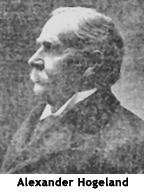 His personal campaign after the Civil War provided paperboys with more pay and an improved standard of living that was denied them by national publishers. His exploits formed the basis of the play and motion picture, “Newsies,” concerning the New York City newsboy strike of 1899. He also was known as “the father of the curfew.” His personal campaign after the Civil War provided paperboys with more pay and an improved standard of living that was denied them by national publishers. His exploits formed the basis of the play and motion picture, “Newsies,” concerning the New York City newsboy strike of 1899. He also was known as “the father of the curfew.”
However, the War Between the States perhaps was the foundation for Hogeland’s mission to help those in need.
When he was a young man, Hogeland moved to Lafayette, Ind., and settled down to start a family. Just before the Civil War, he married Margaret Wells and, when the Civil War broke out, he joined the Union’s 10th Indiana Infantry. The regiment was attached to Gen. William Rosecrans’s Brigade under Gen. George McClellan’s Army of Western Virginian Campaign. On July 11, the regiment fought at the Battle of Rich Mountain.
Hogeland fought at the Battle of Mill Springs on Jan. 19, 1862, and after the battle, he was in charge of the sick and wounded. For several days afterward, he wrote that the regiment encamped on the grounds and in some of the huts formerly occupied by Confederate Gen. Felix Zollicoffer’s men. As with many Civil War camps, typhoid fever developed and managed to infect 100 men. Within two weeks, 12 men died of the disease and Hogeland pleaded with the Post Surgeon to take the men from Somerset to Lebanon. The surgeon agreed and Hogeland assembled several wagon teams into service. Hogeland was not able to transport the men until March of 1861. When the wagon trains left Somerset, rain began to fall and the roads became a quagmire of mud. Both the Post Surgeon and Hogeland thought that none of the men would make the journey and survive. Amazingly, by the time the men arrived at Lebanon, they had recovered sufficiently to be able to walk from the wagons into the hospitals.
The War Department promoted Hogeland to the rank of colonel and he became an officer of the 10th Tennessee Infantry and took part in many notable engagements. Several times he was taken prisoner, but he either made his escape or was exchanged. He remained colonel of the 10th Tennessee until the close of the Civil War. When the War ended, he moved to Louisville.
For 40 years, Hogeland worked among the newspaper boys. During the mid 19th and the early 20th centuries, newspaper boys were the main distributors of newspapers to the general public. They were not employees of the newspapers, but purchased the papers from the news companies and sold them as independent agents. The newspaper moguls, such as William Randolph Hearst and Joseph Pulitzer, did not allow the return of unsold papers. The newspaper boys on average earned 30 cents a day and worked until very late at night. Thousands of children worked the streets selling papers throughout the country. Most of the country did not care about the ill treatment and poor living conditions of the newsboys and they were not a major concern of society.
Hogeland noticed the deplorable conditions the boys lived in, both physically and morally. He saw the boys smoking, gambling and involved in other vices. They were becoming criminals and not useful citizens to society. He decided to stand up and help them.
In 1884, Hogeland worked on the curfew law, which meant that at 8 p.m. during the winter and 9 p.m. during the summer, all children under 15 years of age would have to be at their homes or were liable to arrest. He started his campaign in Indianapolis, visiting the homes of the most prominent and influential residents of the city, explaining the nature of his mission and asking for their assistance. He took those who doubted his mission to see the boys living in the streets in garbage boxes with a pair of dice in one hand and cigarettes in the other. The law passed.
He founded the Newspaper Boys Home where children – fatherless and motherless and too young to care for themselves – would be given a home and an education. Hogeland traveled from city to city and at each place he mingled with the newsboys. He would address them and get their cooperation in his work. With his help, more than 4,000 cities passed the curfew law.
As creator of the “Ribbon Day,” Hogeland, on his visits to various cities, would get the newspaper boys together, and assisted financially by the residents of the city, would take the boys out to the parks or give them an excursion on the river. After the outing, he would seek out all the newsboys clustered in the alleys and, after furnishing each one of them with a ribbon, he would form them into a parade and march them to the offices of the governor, mayor or other public officials. On Aug. 14, 1903, Hogeland formed a Ribbon Day in Louisville. He marched 77 boys wearing pink ribbons that had the picture of Hogeland printed on them to City Hall. The ribbon was to remind the boys to live honest, industrious lives and the badges were presented by the businessmen of the city. After speeches by Mayor Paul Barth and Hogeland, Barth presented each boy with a silver quarter.
Hogeland’s work finally came to a head when on July 1899, a large number of New York City newsboys refused to distribute the papers of Pulitzer and Hearst. The strikers brought traffic to a standstill on the Brooklyn Bridge and prevented the distribution of newspapers to most of the New England cities. They kept others from selling newspapers by tearing up the distribution centers in the streets. Several rallies were held and managed to assemble more than 5,000 newsboys. Hearst and Pulitzer caved in and agreed to buy back all the unsold newspapers.
On June 17, 1907, Hogeland made his last trip to support the boys in Omaha before he was going to officially retire. He wanted to give each boy a copy of his book entitled “Twenty-five years With the Newsboys” as a souvenir.
While settling down at the Murray Hotel in Omaha, he turned on the gas lamp in his room, but forgot to light it. He passed away from asphyxia.
The next morning, the newsboys were the first to announce the death of Hogeland to the family. Col. Hogeland’s body was transported back to Louisville where he was buried at Cave Hill Cemetery.
|


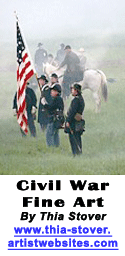
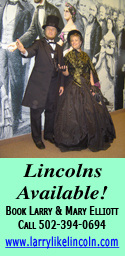
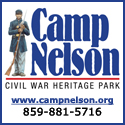
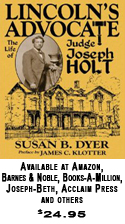
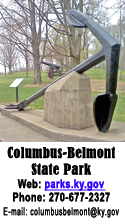



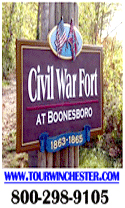
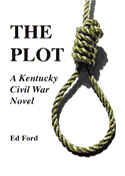


 His personal campaign after the Civil War provided paperboys with more pay and an improved standard of living that was denied them by national publishers. His exploits formed the basis of the play and motion picture, “Newsies,” concerning the New York City newsboy strike of 1899. He also was known as “the father of the curfew.”
His personal campaign after the Civil War provided paperboys with more pay and an improved standard of living that was denied them by national publishers. His exploits formed the basis of the play and motion picture, “Newsies,” concerning the New York City newsboy strike of 1899. He also was known as “the father of the curfew.”